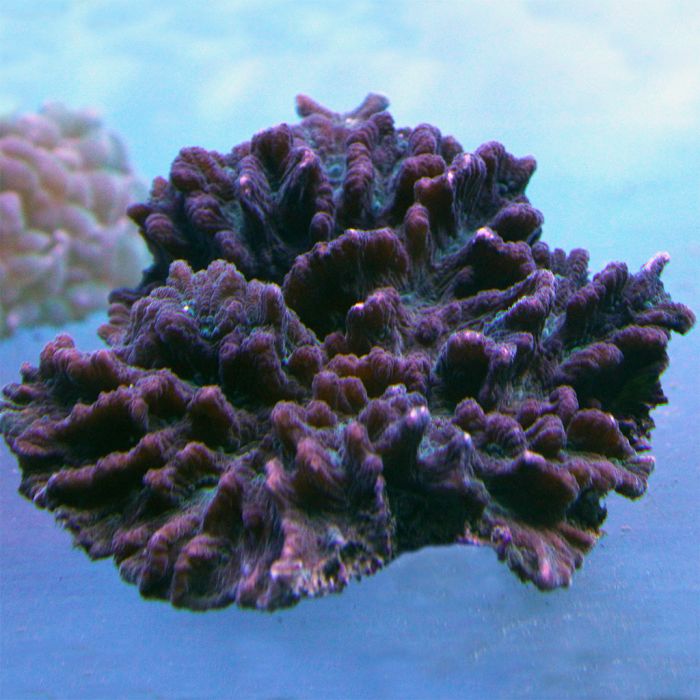Pectinia/Spiny Cup Coral
Faviidae, or Closed Brain corals, are quite hardy and adaptable, making them a great first introduction to stony corals. Their wide array of possible color combinations make them popular with experienced reef-keepers as well. They are tolerant of less-than-perfect water quality and are not prone to pests.
This coral receives most of its energy by utilizing the photosynthetic algae contained within its tissues. It can also be offered zooplankton coral preparations, rotifers, enriched brine shrimp, oyster eggs, etc. Its transparent feeding tentacles extend mainly at night, although it can learn to feed during daylight hours. Colonies with very bright colors and flat forms thrive under bright light and strong water flow; rounded, dome shapes need moderate light and flow.
Some species are able to produce copious amounts of clear mucus and should be rinsed well before adding to a display aquarium. Space should be provided between corals to allow for growth and expansion, as its long sweeper tentacles have a strong sting.
Moon corals resemble an otherworldly landscape which has been bombarded with meteorites. Many color combinations are possible, with Australian corals being more rare and impressive than those from other locations. It may one of two very similar corals: Favia, which has separate corallites, and Favites, in which the corallites share their walls. Both have identical care needs and make terrific additions to almost any reef.
Water flow is best provided as turbulent flow with the use of a wave maker or surge action. Constant laminar flow is very damaging and could cause death of the coral. Alkalinity, calcium, magnesium and strontium are required for growth and should be checked regularly.
- Difficulty: Easy
- Growth Speed: Medium
- Lighting: Medium - High
- Average Placement: Middle - High
- Water Flow: Medium - High
- Temperament: Aggressive
Customers who bought this also purchased
 Frogspawn - Bi-ColorOut of stock
Frogspawn - Bi-ColorOut of stock Frogspawn - PurpleOut of stock
Frogspawn - PurpleOut of stock
















